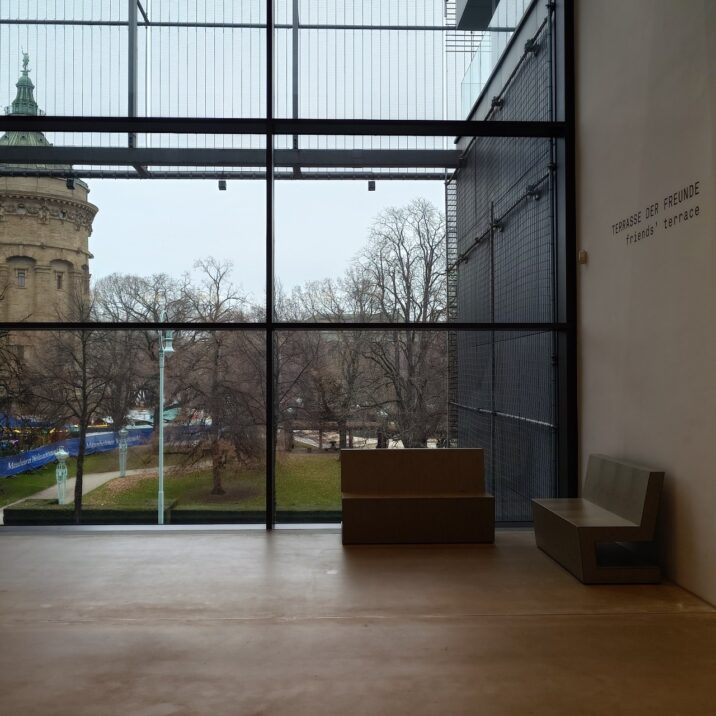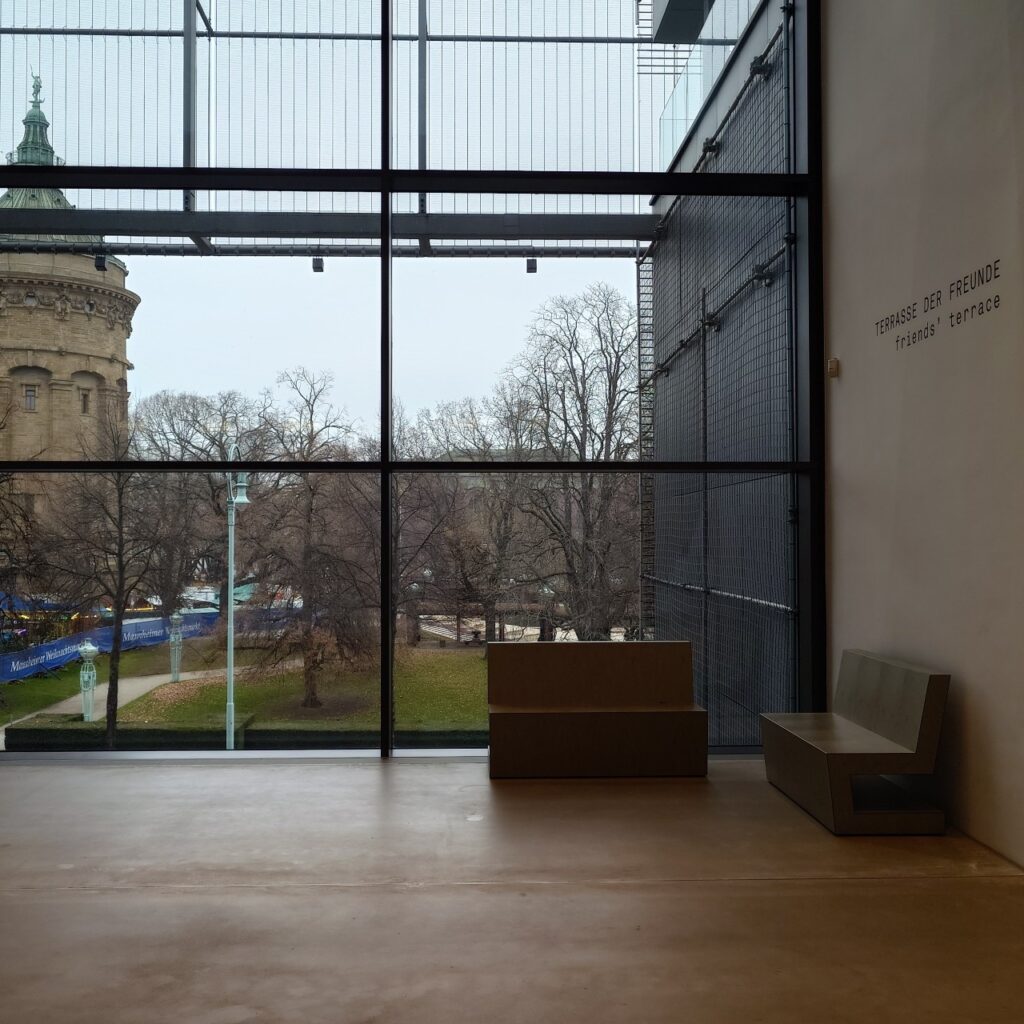
#kunsthallemannheim #newobjectivity #art
This morning around 8:30 am, I set off – a good time to travel, in my opinion. This is when there isn’t much traffic from commuters yet, but the crowds haven’t yet arrived either…
I head to the train and get on the ICE (I’ll write that because the train company has very little competition on long-distance routes, so saying the name is not misunderstood as advertising). Surprisingly, the train is on time and travels as announced. Even if one wonders along the way why the speed is not really high on certain routes – moving quickly is not the general idea everywhere…

Today’s destination is Mannheim – a city I haven’t been to in years and especially not „just like that“. When I’ve been to Mannheim before, it’s always been for specific occasions or purposes. That’s the case today as well, but more in the sense of „I have to go there“. The Kunsthalle in Mannheim is showing an exhibition on the New Objectivity. For those to whom that doesn’t mean anything, it’s a movement in art (and literature, for example, with Erich Kästner) that has dealt primarily with clear, straightforward images. Although that’s not entirely accurate, since Otto Dix is also part of the New Objectivity, but he didn’t paint in a straightforward or clear manner. Many will know Edward Hopper’s painting „Nighthawks“.
I like this kind of art. It leaves behind the very pronounced Expressionists and tries to depict the world that has been shaped more by crises, wars, flight, and upheaval than ever before. Changes such as the Industrial Revolution, two World Wars, hyperinflation, and Black Friday (no, not that discount price increase scam – but the day when many lost all their financial assets: No, don’t think of any parallels, there’s certainly no connection…) and much more have made for a very eventful time. Despair and a sense of powerlessness have shaped the moods in the population. „Nighthawks“ by Edward Hopper stands for that symbolically: Night-time stranded people with empty gazes seek a pause in their earthly existence in a bar.
Since I’m not a professor of art, I’ll leave it at that. I’m curious to see what Mannheim has put together.
The first stop is the walk from the train station to a small, very nice French café around the roundabout by the water tower. It’s really cold, Mannheim doesn’t exactly recommend itself at first. But the café makes up for a lot. The water tower is already worth seeing from a distance, and somehow, Mannheim makes it intriguing and inviting to explore more…


In advance:
The New Objectivity exhibition at the Kunsthalle Mannheim is really worth seeing. A lovingly curated exhibition. A very good overview of all the artists from the period 187x to 195x (plus or minus…). The exhibition covers the social aspects, of course, because that’s one of the reasons for the New Objectivity. The self-confidence that emerged after the stock market crash, the new self-confidence of women (Marlene Dietrich as the great role model), but also the way the crises and strains of the First World War and its surroundings were dealt with – all of that and more flows into the exhibition. The paintings are complemented by sculptures and graphics/sketches. I am impressed by the overall impression one gets when leaving the exhibition. It gives you the feeling of being informed and having seen worthwhile art (whether you like it or think it’s „good“ is up to each individual*). Also, the different manifestations of the New Objectivity movement are addressed: For the exhibition, it makes a difference whether it’s about depictions of people or landscapes or still lifes. It’s simply a really good exhibition! #kunsthallemannheim thank you for this refreshing and worthwhile exhibition.
And as one might have guessed, I know Edward Hopper’s paintings: He’s not missing either.
*Judgment plays a role in the context of the New Objectivity in a negative sense: Some works were banned or destroyed as degenerate art by the National Socialists, some artists were Jewish and were murdered in the Nazi concentration camps, some elements of the New Objectivity served the Nazis as „preferred elements“ of their human image, their blood and soil ideology, etc.
> So I’ll leave out a judgment of the art in the usual sense.